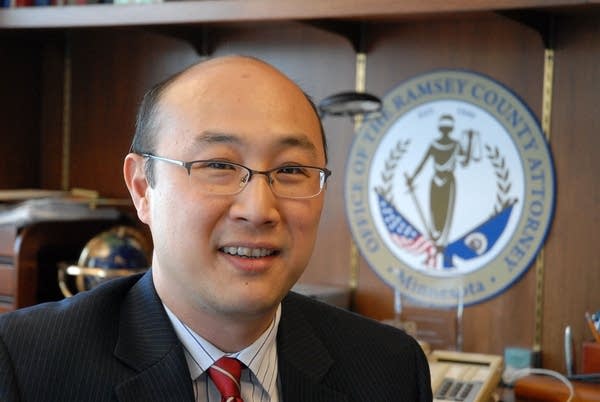Ramsey Co. Attorney on his office's progress 'reimagining juvenile justice'

Go Deeper.
Create an account or log in to save stories.
Like this?
Thanks for liking this story! We have added it to a list of your favorite stories.
Ramsey County is in the midst of what it's calling “(Re)Imagining Justice for Youth” and it recently released a progress report on the effort.
Beginning in the summer of 2021, the Ramsey County Attorney’s Office began collaborating with the Public Defender’s Office to review juvenile cases before a decision is made about whether to try the young person in court. County Attorney John Choi said, before this, prosecutors rarely got the chance to learn about an offender’s background and consider alternatives before filing charges.
Under this new program, 30 percent of the juvenile cases referred to Choi’s office between July 2021 and July 2022 went through the collaborative review process. Most of them were then resolved through channels outside of the justice system, with caseworkers or through things like job training programs. Serious crimes that involved physical harm or guns were not eligible for the program.
The University of Minnesota report on the data says these cases were resolved more quickly than those that went through the traditional legal process, more successfully engaged parents and family, and saved taxpayers money. The program is too new to assess whether participating youth commit new crimes.
Turn Up Your Support
MPR News helps you turn down the noise and build shared understanding. Turn up your support for this public resource and keep trusted journalism accessible to all.
Choi joined All Things Considered this week to answer questions about the program. Click play on the audio player above to hear it, or read the transcript below. Both have been edited for clarity and length.
Your office is saying there are promising findings with early data. What is it showing you?
One of the promising things that we're seeing is that we're addressing some of the racial disparity head on. During my whole time as county attorney, what really bugged me was that we always had this 25 percent gap in youth who actually would be successful in diversion. And oftentimes it was because they didn't show up.
Diversion is just some way of deflecting a case to some sort of provider that will address some of the issues and administer some sort of accountability, maybe an apology letter to the victim. So something outside of the justice system.
Instead of putting everything into this adversarial thing where I'm trying to prove something and the defense attorney is trying to defend their client, and the judge is trying to figure out what the truth is, we're actually working together.
What's the goal there and how is that different from the goal with a traditional trial and charges?
The prosecutor never ever gets to know about the background or the reasons for justice involvement. We don't get to know the needs of the family. What this does is allows us, before we even make a decision about whether or not it should be petitioned in court, or we should have some sort of community based accountability restorative justice process, we're actually getting all of that information because we're in partnership with the public defender.
And I think we're making better qualitative decisions. And like I talked about on the outcome and the success, we're actually getting these kids and families to engage more than we did in the traditional system.
Can you give us an example of a kind of case where this has worked and had a positive outcome?
A family-related dispute involving maybe an older sibling and a younger sibling, where there might have been some assaultive behavior to that younger sibling and somehow, because of what had happened, the police happened to have been called. What the family wants there in many instances is to resolve this issue. They don't want a conviction outcome for the older sibling.
And so we give resources to the family and to the two that were involved to manage these conflicts so that it might not lead to having a physical altercation that is so bad that it scared somebody to call the police.
Carjackings, for example, done by youth with guns. Is that the kind of case we're talking about being included here?
So we have some pretty strong guardrails about what kind of cases can be collaboratively reviewed. And so in a carjacking situation, that would be some form of aggravated robbery. And so that's not going to make it in.
Now it might be if it's just an auto theft, and there's a person in the backseat who happened to come to our attention. We might collaboratively review that and maybe come to a decision that says, we need to help this young child make better decisions in their life so that they are not hanging out with the wrong people. And how do we make that happen?


